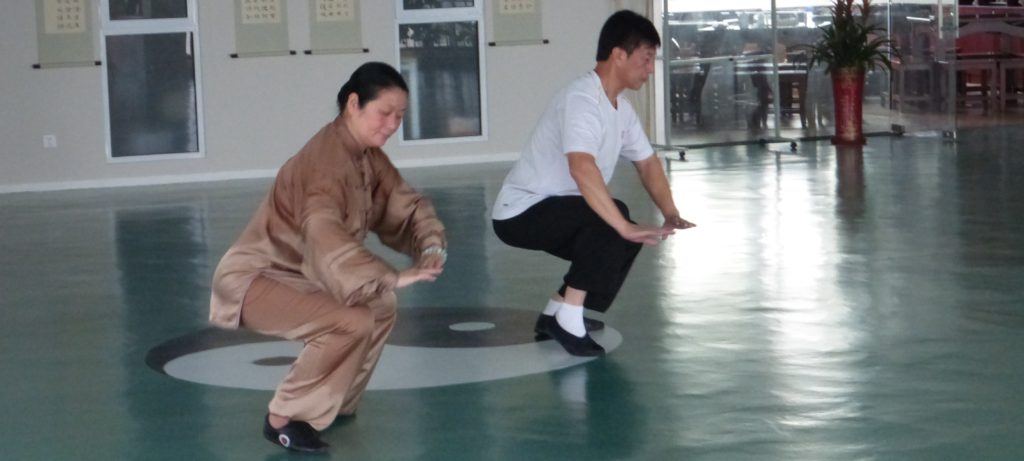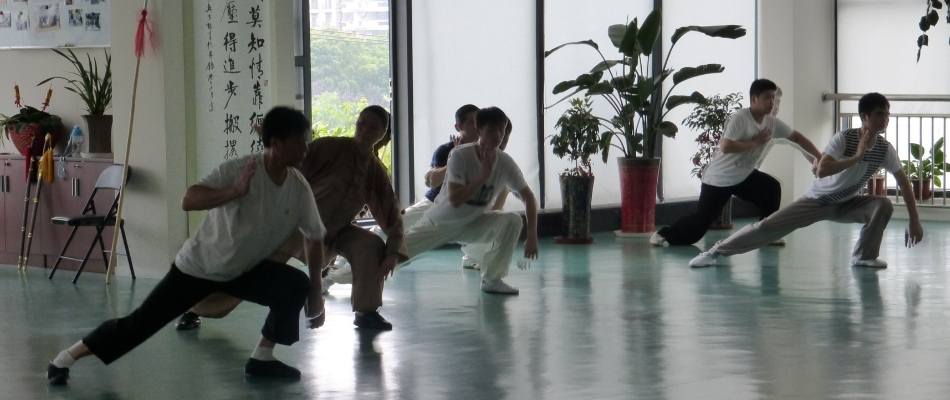Wanting to begin a tai chi practice or trying to explain what you are doing to others can be daunting because asking what is tai chi gets a myriad of answers. Is it a marital art or a form of meditation? Is it physical exercise or is it gentile movement? Is it for the young and flexible or older adults? It can get confusing because the answer to all these questions is YES! But this is also why it is exciting because it explains why so many people are enjoying and benefiting from tai chi is so many unique ways.
Tai chi (chuan) is a Chinese martial art that combines slow movements, deep breathing, and a meditative state. Research continues to show that tai chi elicits a relaxation response and promotes physical health, healing, and mental well-being.
If you are considering tai chi, here is an explanation to make it seem less foreign and less intimidating. If you are practicing already, here is a way for to explain your art to others and see how you can expand your knowledge in new and unique directions.

The Four Primary Explanations for What Tai Chi Is
At it’s core, tai chi is series of movements that coordinate the hands, feet, body, mind, and breath. There are long and short versions of the tai chi form as well as forms that involve weapons. It has its origins in China with fighting and self-defense designed for the military and religious monks alike. Therefore it’s a martial art but most practitioners study it today in a non-competitive way.
The same soldiers and monks who gained fighting skills also gained physical fitness, stamina, and longevity through the stretching, gentle movements, and physically rigorous postures. So in this sense, tai chi is also a valuable form of exercise. I say valuable because it can be performed at any age. It can be not only modified to accommodate injury and illness but can also be heal and improve those ailments. This is in stark contrast to most physical activities where doctors ask us to hold off until we better.
Tai chi is also often described as moving meditation because one of the goals and benefits from doing the form is a calm mind and stress reduction. The movements are designed to coordinate and elongate the breath while correcting the posture and training mental focus. The same benefits obtained from sitting meditation can be derived from tai chi which is a real bonus for those of us that have trouble sitting still or concentrating.
Lastly, tai chi is a philosophy. Learning to move differently during the form teaching lessons that can be extrapolated from the form and applied to life outside of the classroom. For example, concepts such as mindfulness, awareness, staying present, and slowing down, make our hectic world easier to navigate.
What makes tai chi so hard to define is that when most people are explaining what tai chi is they are speaking form a point of view of what is most important to them or how they personally have benefited the most from tai chi. Frankly this is why this art has so many lifelong practitioners. Not only do you keep getting benefits from the practice throughout your life but it permeates into every nook and cranny.
Let’s cover all four views a little bit more in depth and I have included links out to separate essays dedicated to each individual topic.

Tai Chi is a Martial Art
Tai chi began as a martial arts system that was taught to the monks of Shaolin Temple by a Buddhist monk named Bodhidharma believed to have traveled to China from India in the 5th Century. Initially it was taught to improve the physical stamina of the monks to improve their meditation. With temples being great distances from city centers and monks having to travel dangerous roads, the training also served to teach self-defense. Thus the infamous martial artists of Shaolin had their start.
Tai chi’s marital focus developed further under the five families that are the most prominent styles of tai chi practiced today. A military commander Chen Wangting retired to his village combining what he learned from the military with what he learned from Buddhist and Doaist monks. He taught in Chen Village giving birth to the first “frames” or tai chi forms.
A disciple from Chen Village, Yang Cheng Fu, moved to what Beijing and taught the Emperor’s military in the forbidden city. Two key students and co-teachers: Sun and Wu, went on to form their own style of tai chi.
Is tai chi a marital art? Absolutely. While it is not used for fighting much at all these days the foundation of its teachings and movements all originated in times of conflict and war. What makes tai chi special is that it is one of the three primary internal martial arts along with Baguazhang and Xing Yi Quan. These martial arts are considered internal because the focus on developing martial skill as well as fortify the health of the body by building internal energy.
Tai Chi is Exercise
Trying to explain what tai chi exercise is might be the most difficult because it is extremely different from what exercise has become in the last 70-80 years. The easiest way to go about this is to explain what tai chi does for your health and go on in an additional article to describe how tai chi exercises accomplish this. Tai chi exercises can give you:
- Balance
- Flexibility
- Stamina
- Strength
So far so good right? Additionally, it is just one of a small number of sports like tennis, golf, and swimming that can be performed your entire lifetime.
And here is where tai chi gets exceptional marks. Tai chi can be adapted for temporary limitations such as low energy from sickness or an injury. It can also be adapted for permanent changes such as strokes, debilitating diseases like fibromyalgia, and age-related changes.
Tai chi exercises suffer a bit of a bad reputation in the west as an activity you do when you are too old or injured to do anything else. The truth is that not only can you get fit from tai chi but it provides the protection and recovery to participate in any other sport of your choice for a very long time.
Tai Chi is a Philosophy
Many of the principles of tai chi for how you move, how you breath, and how you interact with the environment are all rooted in the philosophical theories of Taoism and Buddhism. Philosophy wouldn’t be philosophy if it wasn’t mentally stimulating and complex. I invite you to read about Yin Tang Theory and Five Elements Theory to get an idea of how 1) movements translate to philosophy and 2) how practicing something each week can expand out to positively affect your life.
Tai Chi is Moving Meditation
Most people meditate or would like to meditate for the promised calm state of mind and positive outlook on life. What is less known is that you don’t have to be sitting in a quiet room to accomplish this. There are standing meditation practices with and without movements called qi gong and the moving meditation of tai chi.
Tai chi is called a moving meditation because the same techniques such as focusing on the breath and coordinating it with movements, calming the mind, focusing on the present, and slowing down are shared by both. Meditation and tai chi also share a similar set of goals. Practitioners of both enjoy an improved mental state, positive outlook, and way to navigate stressful situations in their life.

Who is Tai Chi for? – Everyone
This is the easiest question of all because tai chi is for everyone. Many of us arrived at tai chi’s door because something happened so that we can no longer do an activity we love. Another good number of us got a health scare big enough to cause us to want positive change. If you have any medical condition you have to ask your doctors if tai chi is safe for you but there are dozens of studies proving its efficacy that you can share with them.
All of us wish that we had found it sooner.
Many of us who faced injuries may not have had to stop that other sport if we had avoided the injury in the first place. Tai chi’s focus on stance depth, flexibility, and balance is the perfect antidote for the more impactful activities. Stress and raised cortisol levels are directly connect to hypertension, weight gain, and poor sleep. Tai chi reduces this stress. Lastly, it takes a while to “get good at tai chi” so we all wish we started sooner than we did so that we would be further along the path.
Why Try Tai Chi?
Hopefully by now you can see that tai chi is good for physical fitness, mental health, socialization, and improving multiple aspects of life. It is so easy to learn and is so inexpensive because it can be practiced anywhere alone or with friends.
Lastly, there are so many things in life that get more difficult as we get older, busier, or get in worse shape. Tai chi is one of those rare activities that we can adapt so we can stay active for a very long time.
Here is a fun summary video to get you motivated to join the millions who are or have participated in this centuries-old tradition. Then you can read about what what the learning path looks like for beginners on to instructors.
Taoist Master Gu Answers: What is Tai Chi?
Tai Chi Chuan Pronunciation


